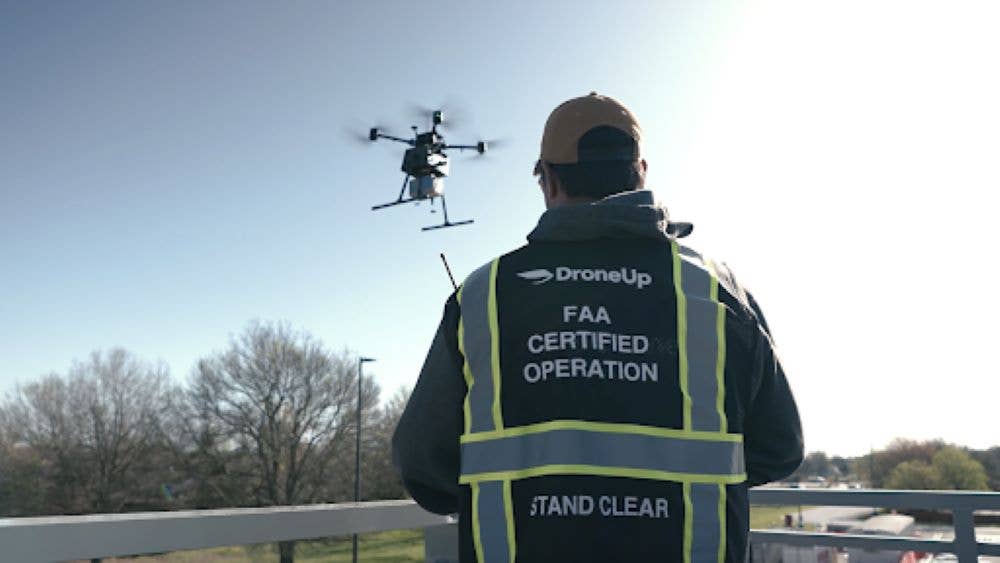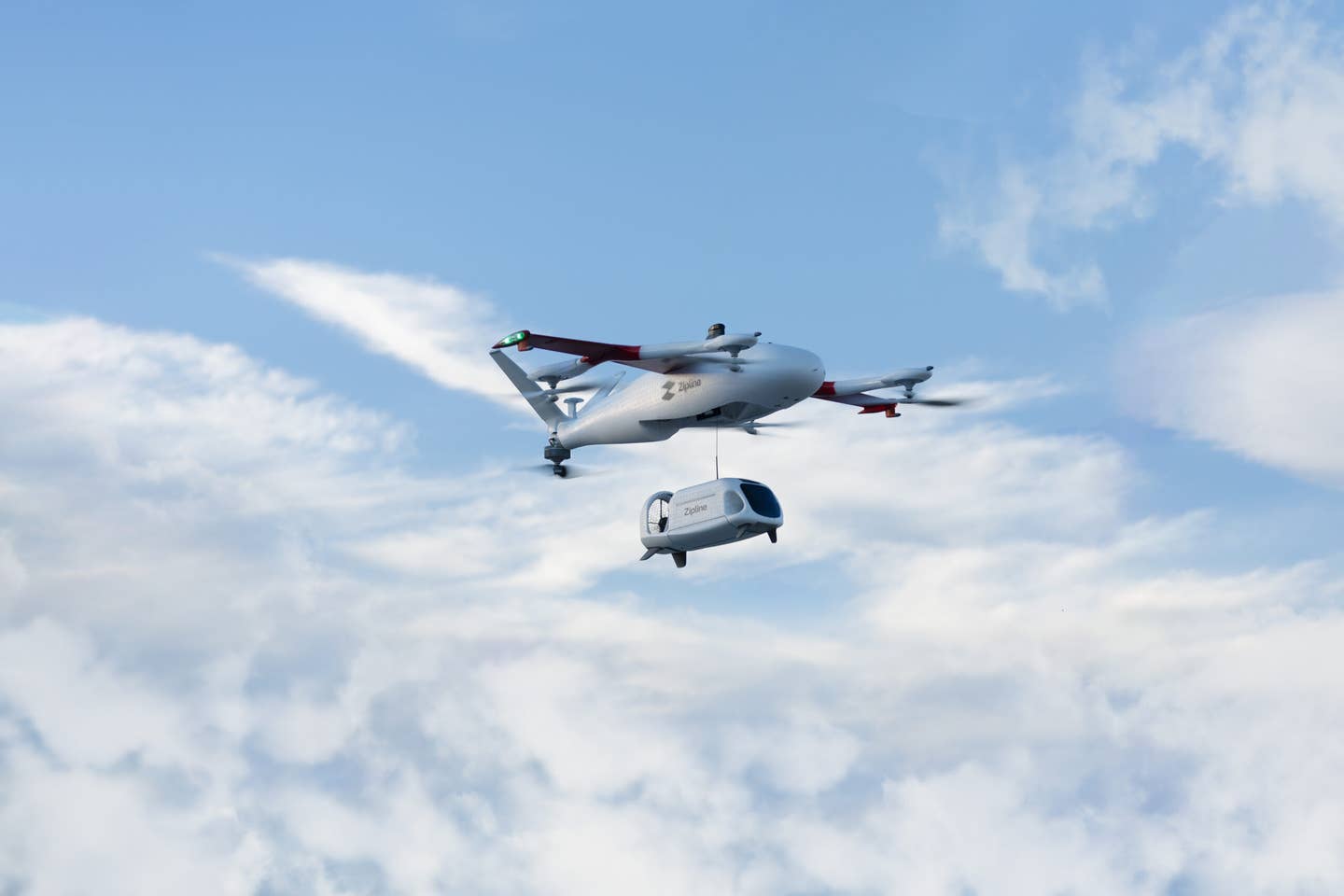DroneUp Introduces AI-based Air Traffic Control System
The partnership with Iris Automation will create a cell tower-like network.

A partnership with Iris Automation could expand the capabilities of DroneUp operators —and the system overall. [Credit: DroneUp]
DroneUp, the company powering drone deliveries for Walmart, on Friday announced a partnership with aviation safety firm Iris Automation to build what is essentially an air traffic control system for unmanned aircraft systems (UAS).
The agreement could open up Walmart and DroneUp’s service, which is arguably the largest commercial drone delivery operation in the U.S., to flights beyond the visual line of sight (BVLOS) of the operator—something that has eluded the companies thus far.
Unlike Zipline, American Robotics, and others, DroneUp and Walmart’s service does not rely on a Part 135 waiver from the FAA, which in certain cases allows for BVLOS flights. Rather, they’ve opted to fly their drones where operators can see them, limiting most deliveries to a 1.5-mile radius.
However, the Iris partnership hints at the companies’ larger ambitions. Under the agreement, DroneUp will deploy Iris’ ground-based detect-and-alert system, Casia G, across a network of “nodes” spread throughout its delivery areas. These nodes would function much like cell towers, communicating airspace traffic data to improve BVLOS visibility.
To do so, Casia G relies on artificial intelligence and computer vision technology that detects approaching aircraft in a 360-degree field, as far as 1.75 miles away. But that range becomes unlimited in a multi-node network, like the one DroneUp is proposing.
By stationing Iris’ tech at launch and recovery points and throughout delivery zones, DroneUp could create a rudimentary air traffic control system for drones, one that detects aircraft, classifies them, and issues alerts whenever they fly into the operating area. That would give operators a holistic view of the airspace—and make BVLOS flights inherently safer.
“Through the use of Casia G, DroneUp will be able to remove visual observers – creating a path to more economical scaling of their operations while simultaneously improving safety,” said Jon Damush, CEO of Iris Automation.
Because the FAA does not yet have regulatory standards for BVLOS flights, companies like Zipline have gotten away with them via individual waivers or approvals. Until that changes—which it soon could—that’s the likely path for DroneUp, too.
The FAA is very picky about awarding BVLOS permissions. But Zipline was able to secure its approval by flying millions of BVLOS miles in sub-Saharan Africa. DroneUp could do the same by demonstrating its airspace visibility system in a controlled or limited environment—or, it could try flying somewhere with looser BVLOS restrictions.
“The technology behind Casia G for BVLOS has the potential to be a game-changer in demonstrating that delivery in more populated areas can be as convenient and secure as it currently is in rural environments,” explained DroneUp CTO John Vernon. “Through this partnership DroneUp can dramatically scale operations, freed from restrictions.”
Currently, DroneUp and Walmart operate services out of 36 store-based hubs across seven states, upholding the promise Walmart made about a year ago. According to the world’s largest retailer, that translates to about four million eligible customers.
Yet the network made only around 6,000 deliveries in 2022—very respectable by drone delivery standards, but far from the kind of market capitalization the firms are eyeing. The collaboration with Iris could capture more of those dormant shoppers.
According to Walmart, it has about 4,700 stores within 10 miles of 90 percent of the U.S. population, meaning its current 1.5-mile delivery radius reaches just a fraction of them. Adding BVLOS capabilities would expand that range, and therefore the network’s reach, exponentially. Not only that, but it would allow more Walmart stores—particularly those in dense urban areas—to double as drone delivery hubs.
Before that happens, DroneUp will need to prove to the FAA that its airspace visibility system is legit. But if it does, the Walmart-DroneUp network could shatter 2022 figures.

Sign-up for newsletters & special offers!
Get the latest FLYING stories & special offers delivered directly to your inbox






